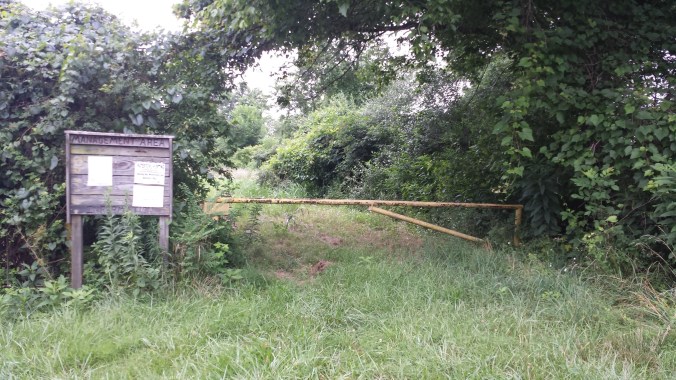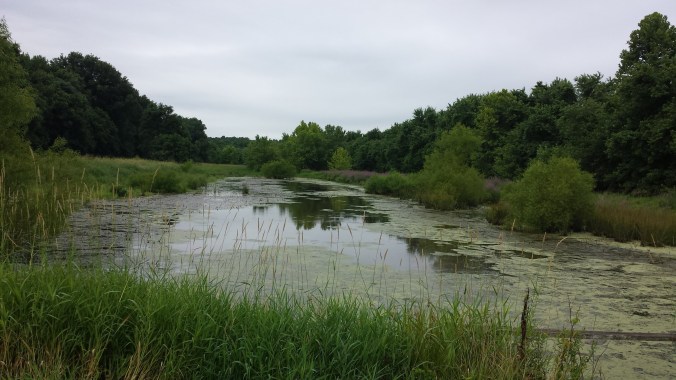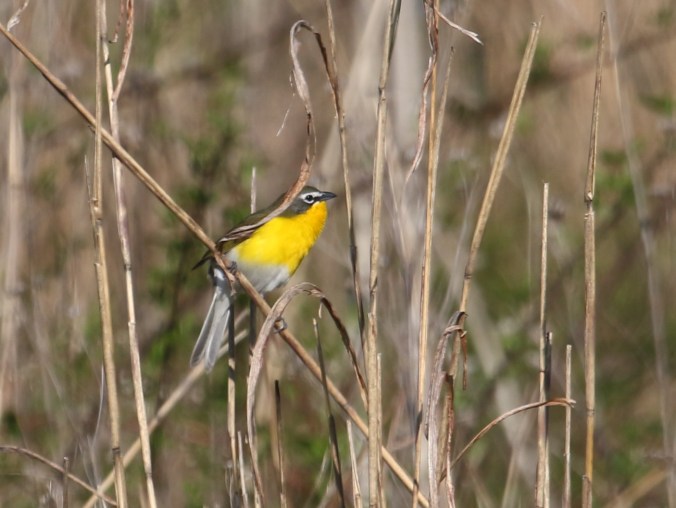James River State Wildlife Management Area is the eBird hotspot with the third most species in Nelson County, with 132, and many more still waiting to be recorded. It still isn’t getting birded as much as it deserves, with only 67 complete eBird checklists at the time of this writing, but over the last year the coverage has improved. It’s one of the only publicly accessible marshes in the county, which makes it a particularly important spot for local birders to check, especially in migration, when rare marsh birds like rails and bitterns are moving through the area.
There is often hunting at the WMA during the winter, so you may want to wear blaze orange. According to the Virginia Department of Game and Inland Fishery, Sunday is the only day they never have hunting. One winter day we planned to bird there, but hunters and their dogs lined the road all the way from the entrance to the river. We turned around. Also, as for all state WMA’s, you should purchase an access permit before your trip.
The WMA is located in the eastern part of Nelson County, along the James River. From Lovingston, you can take James River Road (56) most of the way, turning left onto Cabell Road (626) before James River Road reaches the James River at Wingina. After about a mile on Cabell Road, turn right onto a dirt road called Midway Mills Lane. After a few hundred feet, the entrance to the WMA is announced by a sign on the left.
If you follow the main road all the way to its end, you arrive at a small dirt parking lot next to the James River. Sometimes in winter, if it’s very cold, ducks can be seen on the river there. Species I’ve had on the river include common merganser, hooded merganser, and ring-necked duck. Tall silver maples and eastern sycamores grow along the bank of the James, and in the spring both yellow-throated and prothonotary warblers can be heard singing from them.

Entrance to the Marsh Impoundments
One of the best places to bird at James River State WMA is the marsh impoundments, which are located near the end of the main road. The entrance to the path that leads through the marsh is about 30 meters back up the road, and on the left coming from the river. Wood ducks are present in the marsh all year, and in the winter they are often joined by other species of duck. I’ve had ring-necked duck, mallard, and American black duck in winter, and in March and April, blue-winged teal are abundant. Common yellowthroats, orchard orioles, white-eyed vireos, red-winged blackbirds, indigo buntings, and green herons all probably breed, and are common all summer. In spring, northern waterthrush, marsh wren, and warbling vireo are possible. There’s even a record of alder flycatcher and common gallinule from late May in 2010. The marsh can have shorebirds in the spring, but it depends greatly on the water level. If the water is too high, then there is almost no exposed mud and few shorebirds. Greater yellowlegs, lesser yellowlegs, spotted and solitary sandpipers, and Wilson’s snipe have all occurred there in the past. No one has yet found a rail or bittern, but I believe if people continue checking regularly it is only a matter of time.

Marsh Impoundment.
From the end of the marsh it is possible to keep walking on the path, which leads back into the forest. It gets very overgrown, and I’ve found the best way to get back to the road is to walk next to the train tracks that intersect that path. If you follow the tracks, you’ll arrive back at the main road of the WMA just a little bit past the entrance to the marsh impoundment path. Usually the birding isn’t much different from the rest of the WMA along this path, but I’ve had Philadelphia vireo in fall, and rusty blackbirds and yellow warblers in the pools of water along the train tracks.
Continuing up the road, away from the river, but before you get to the train tracks, several large, weedy fields lie to the left. Yellow-breasted chats and northern bobwhites breed in these fields, although the former is much more abundant than the latter. In May, bobolinks can be present. This is also a good area to keep an eye out for red-headed woodpeckers and blue grosbeaks in the field to the left, and listen for pine and prairie warblers singing from the pines on the right.

Yellow-breasted Chat
Past the train tracks the field continues on the left, although it is more overgrown with autumn olive and other invasive species. Blue grosbeaks, yellow-breasted chats, indigo buntings, white-eyed vireos, and common yellowthroats are still fairly abundant though. A power line right-of-way crosses the road about 500 meters west of the tracks, and it can be used to access the field. If you do walk down the right-of-way to the left of the road, you’ll eventually encounter a small pond on your left. In the summer the vegetation is often so high and dense that it’s impossible to see from the right-of-way and nearly impossible to get to, but it might be worth a check in winter and migration. However, the only birds I have seen on it are wood duck, green heron, belted kingfisher, and swamp sparrow, which are all abundant elsewhere in the WMA.
Exciting and informative blog. Thanks for writing. Keep it up!
LikeLike
Pingback: Nelson County Rarity Roundup – Volunteers Wanted! | Birds and Buds